Located in the southeastern United States, Alabama is a state that stands out with its rich history, culture, and natural treasures. With its deep-rooted past, Alabama has hosted many historical events, from the American Civil War to the civil rights movement, offering fascinating exploration opportunities for history enthusiasts. On the other hand, its Gulf Coast shores, lush national parks, and impressive natural beauties also attract visitors.
Places to visit in Alabama offer a wide range of alternatives for those who want to experience both historical and natural beauties together. From the giant warship in Mobile to the civil rights museums in Birmingham, from impressive caves to dazzling beaches, these destinations appeal to travelers of all ages. These attractions, combined with Alabama’s warm people, delicious southern cuisine, and hospitable culture, promise an unforgettable travel experience.
1. USS Alabama Battleship Memorial Park (Mobile)

USS Alabama Battleship Memorial Park is an important museum ship and open-air museum located on the Gulf Coast in Mobile, a source of pride in the history of the United States Navy. The USS Alabama (BB‑60), which served actively in World War II, operated in both the Atlantic and Pacific fronts, earned nine Battle Stars, and completed its heroic military mission by entering Tokyo Bay in 1945. Opened to visitors as a museum ship in 1965, the Alabama has been preserved for over 45 years by the Mobile community and visitors, serving educational and commemorative purposes.
Visitors can explore the ship’s 12 decks, witness a lock-up simulation, and experience the massive guns and living quarters. Other World War II-era warships and aircraft, such as the submarine USS Drum (SS‑228), are also displayed on land and in the air. The park is filled with monuments honoring war memories, including Vietnam, Korea, and 9/11 memorials, as well as flight simulators. There is also a gift shop, cafeteria, and picnic areas, offering visitors an enjoyable day.
This impressive site offers an opportunity for military history enthusiasts to delve deeper, while also providing an interactive and educational experience for families. The recommended visit duration is at least two hours; for those who want to discover more, it is possible to comfortably wander throughout the facility. If you want to tour a real World War II battleship and feel the technology of the era in place, the USS Alabama is waiting for you.
2. Gulf Shores Beaches

Gulf Shores Beaches are a holiday paradise located on Alabama’s southern coast, famous for their white sands and clear waters stretching along the Gulf of Mexico. With its warm climate, soft beaches, and deep blue sea, Gulf Shores is a favorite of both local and foreign tourists, appealing to visitors of all ages, from families to couples. On the beaches in the area, there are opportunities for swimming, sunbathing, playing volleyball, or simply finding peace by walking along the shore.
In addition to beach enjoyment, Gulf Shores is also an ideal destination for water sports. You can add excitement to your holiday with activities such as jet skiing, parasailing, fishing tours, and sailing. Nearby restaurants, beach bars, and entertainment venues also offer rich flavors and a lively atmosphere. Watching the sunset is one of the most romantic moments offered by the Gulf Shores beaches and is definitely an experience not to be missed.
3. Birmingham Civil Rights Institute (Birmingham)
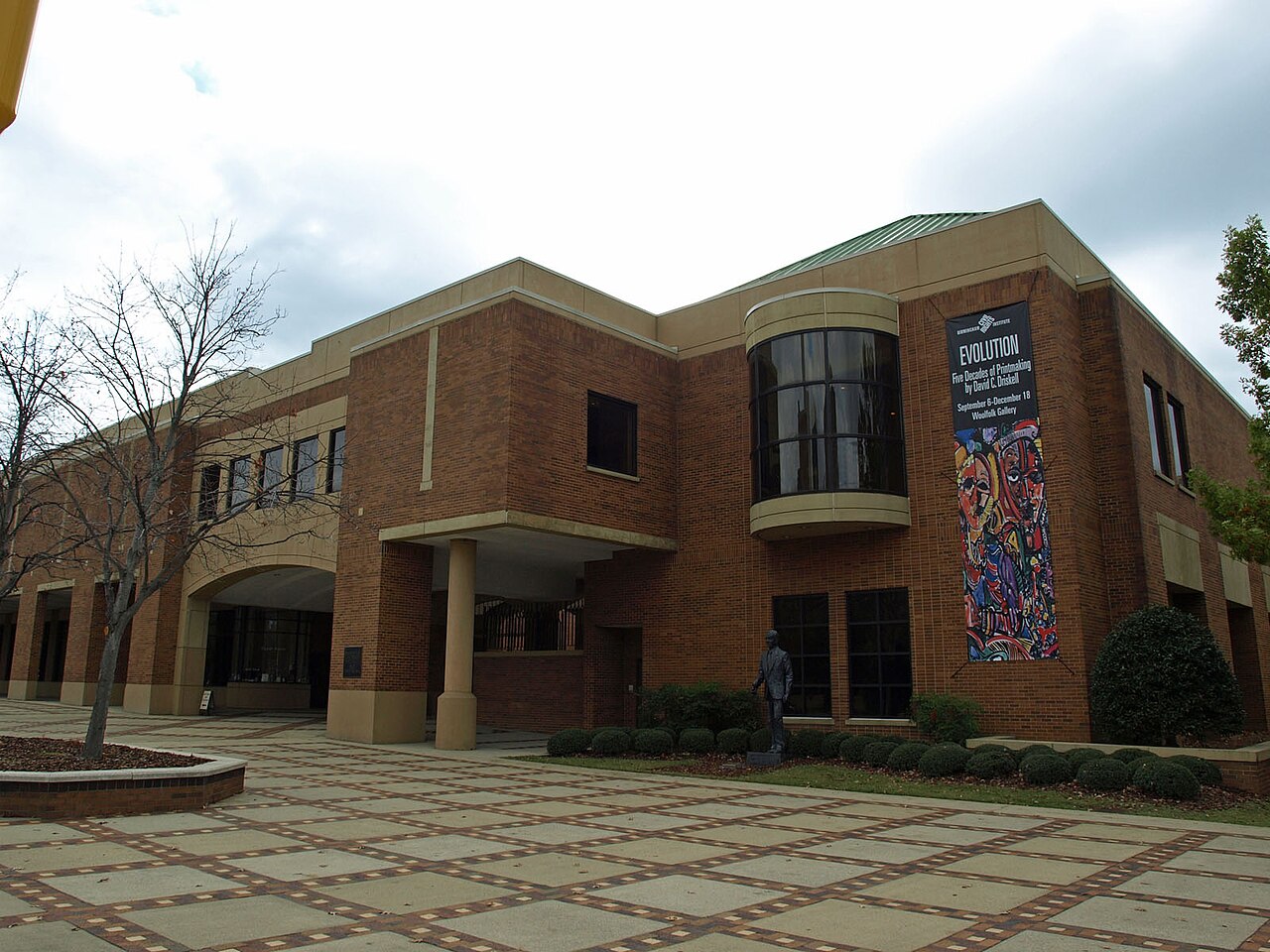
The Birmingham Civil Rights Institute, opened in 1992 and operated within the framework of a Smithsonian Affiliation, is a comprehensive cultural research and education center. The institute is integrated with historical sites at the heart of the Civil Rights Movement in Birmingham, such as the 16th Street Baptist Church and Kelly Ingram Park. Its mission is to ensure visitors are accurately informed by bringing to life the stories of past discrimination, protests, and civil resistance through documents, multimedia presentations, and oral histories, and to contribute to today’s human rights struggle.
Among the institute’s permanent exhibits are a city replica depicting 1950s Jim Crow segregation, a Freedom Riders bus model, and the cell door from Dr. Martin Luther King Jr.’s “Letter from Birmingham Jail” memorial. Visitors can also learn in detail about critical civil rights events such as the 1963 Birmingham Children’s Crusade involving the participation of children, and the 16th Street Baptist Church bombing. Through theater, interactive media, and oral history collections, the institute offers a living journey through history while also creating new areas of discussion in the context of today’s human rights.
4. U.S. Space & Rocket Center (Huntsville)

The U.S. Space & Rocket Center in Huntsville, known as “the world’s largest space museum,” is an impressive center reflecting the state’s entire space history. Founded in 1965 and opened to visitors in 1970, the center is located near NASA’s Marshall Space Flight Center and is operated in cooperation with the Smithsonian. Inside, there are more than 1,500 spacecraft, rockets, and simulators ranging from NASA’s Apollo program to current Sirius space systems. Visitors come face-to-face with Mercury-Gemini capsules, International Space Station modules, and models such as the SLS being developed for America’s future.
The most striking exhibit is undoubtedly the full-scale Saturn V Dynamic Test Vehicle suspended in the 68,000 ft² Davidson Center — the test vehicle for the iconic rocket that took astronauts to the Moon. In addition, you can feel 4 g of force with the “Space Shot” simulator, experience a 3 g spin sensation with the “G‑Force Accelerator,” and attend 3D shows at the INTUITIVE® Planetarium. STEM-based camps such as U.S. Space Camp and Aviation Challenge are also held here; thanks to these educational programs, more than 750,000 participants have become acquainted with the technologies of the future. Families, students, space enthusiasts, or researchers… there is an educational and fun trip waiting here for everyone.
Beyond offering a comprehensive exploration of space history, this center provides a “living experience” with its interactive simulators and educational programs. If you want to stand under a real Saturn V, touch a spacecraft, and experience astronaut simulations, this center in Huntsville is an impressive place to visit in its own right.
5. Little River Canyon National Preserve
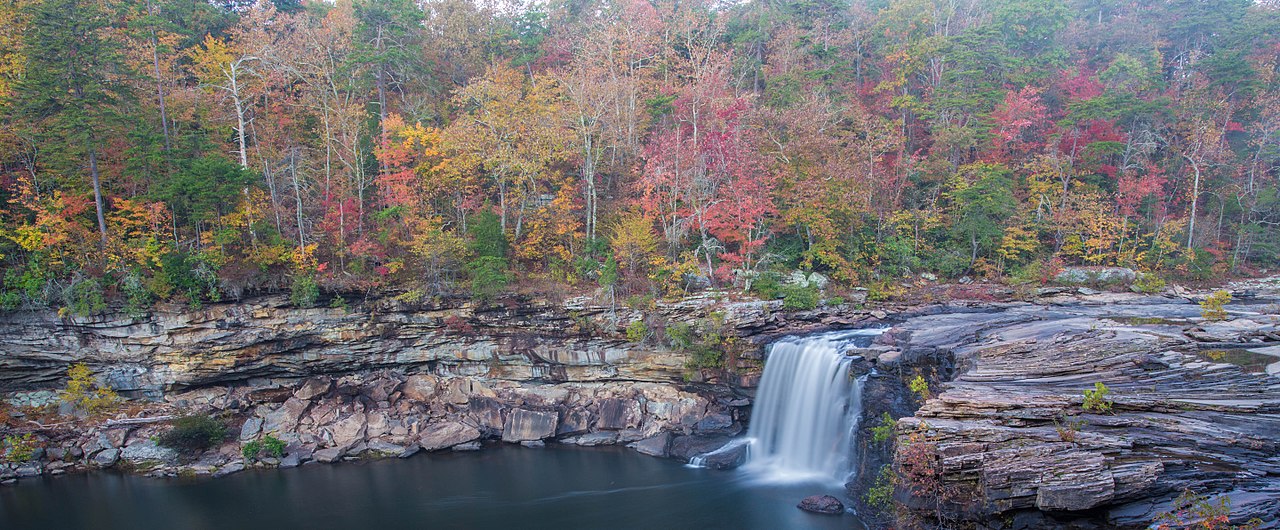
Little River Canyon National Preserve is a unique natural wonder located on Lookout Mountain in northeastern Alabama. Declared a preserve in 1992, this area covers a vast 15,288 acres and forms one of the deepest canyons east of the Mississippi River. Flowing through the canyon, the Little River has over time carved a magnificent valley reaching a depth of about 600 feet (183 m), creating impressive waterfalls such as DeSoto Falls, Little River Falls, and Grace’s High Falls — with Grace’s being the highest waterfall in Alabama (41 m). The 23-mile-long Rim Parkway, known as Scenic Drive, offers visitors breathtaking views with its forested hills, canyon-edge hiking trails, and scenic overlooks.
Visitors can enjoy countless activities immersed in nature here: hiking, birdwatching, fishing, horseback riding, mountain biking, rock climbing, and even canoeing and kayaking. The JSU Little River Canyon Center, an educational and visitor facility, makes the trip even more enlightening with interactive exhibits, a gift shop, an amphitheater, and film presentations. The area also holds significant historical value — Cherokee and Creek Native Americans forced to travel during the Trail of Tears passed through here. With trails of varying difficulty levels, safe canyon hikes, and stunning waterfall views, Little River Canyon is an ideal destination for nature lovers, history enthusiasts, and adventure-seeking travelers.
6. Cheaha Mountain State Park (the highest point in Alabama)
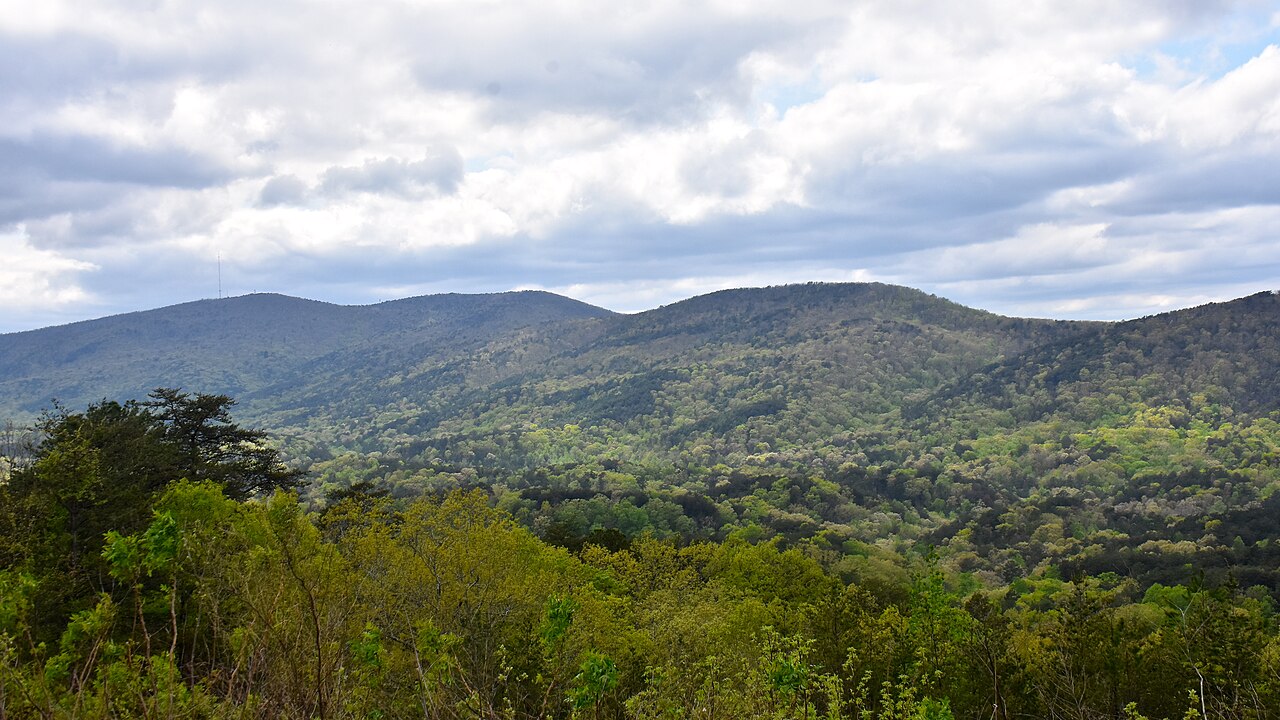
Cheaha Mountain State Park is a historic natural wonder covering 2,799 acres and has been in service since 1933, housing Cheaha Mountain — the highest point in Alabama (2,407 ft / 735 m). The Bunker Observation Tower on the summit was built in 1934 by the Civilian Conservation Corps and offers visitors magnificent panoramic views. Additionally, accessible hiking trails reached via Bald Rock are among the park’s other nature-friendly features.
The park stands out with its unspoiled nature and the numerous recreational activities it offers. Swimming, fishing, and picnic areas at Cheaha Lake are enjoyable stops on your trip. You can hike on trails ranging from easy to challenging, explore the Talladega National Forest along the Pinhoti Trail, stay at campgrounds, or relax in cabins and chalets. Birdwatching is also a popular activity — the park, with its unique ecosystem along the Appalachian range, is an important breeding ground.
Cheaha Mountain is a unique destination appealing to anyone who wants to climb an accessible summit and spend a day that is historical, natural, and fun.
7. Montgomery Rosa Parks Museum

The Rosa Parks Museum in Montgomery opened on December 1, 2000, under Troy University and is located in the restored building of a former department store at the very spot where Rosa Parks famously refused to give up her seat on the bus. This museum is unique in the United States for being dedicated to a single individual; it documents Rosa Parks’s role in the civil rights struggle and presents to visitors, through a time-machine experience, that powerful moment which ignited the Montgomery Bus Boycott. Highlights of the museum include an original city bus from the 1950s (replica) and historical documents such as Parks’s arrest records.
The museum offers interactive exhibits for both adults and children. The children’s section, called the “Cleveland Avenue Time Machine,” sheds light on the Jim Crow era and the pre–civil rights period, providing an educational route for students. Additionally, the exhibit area recreates that historic moment with a studio-film-like reenactment. The museum’s mission is built on keeping Rosa Parks’s legacy alive, emphasizing the importance of civil resistance, and encouraging visitors to reflect. The average visit duration is about two hours, making it an ideal educational venue for both individual travelers and school groups.
8. History Museum of Mobile
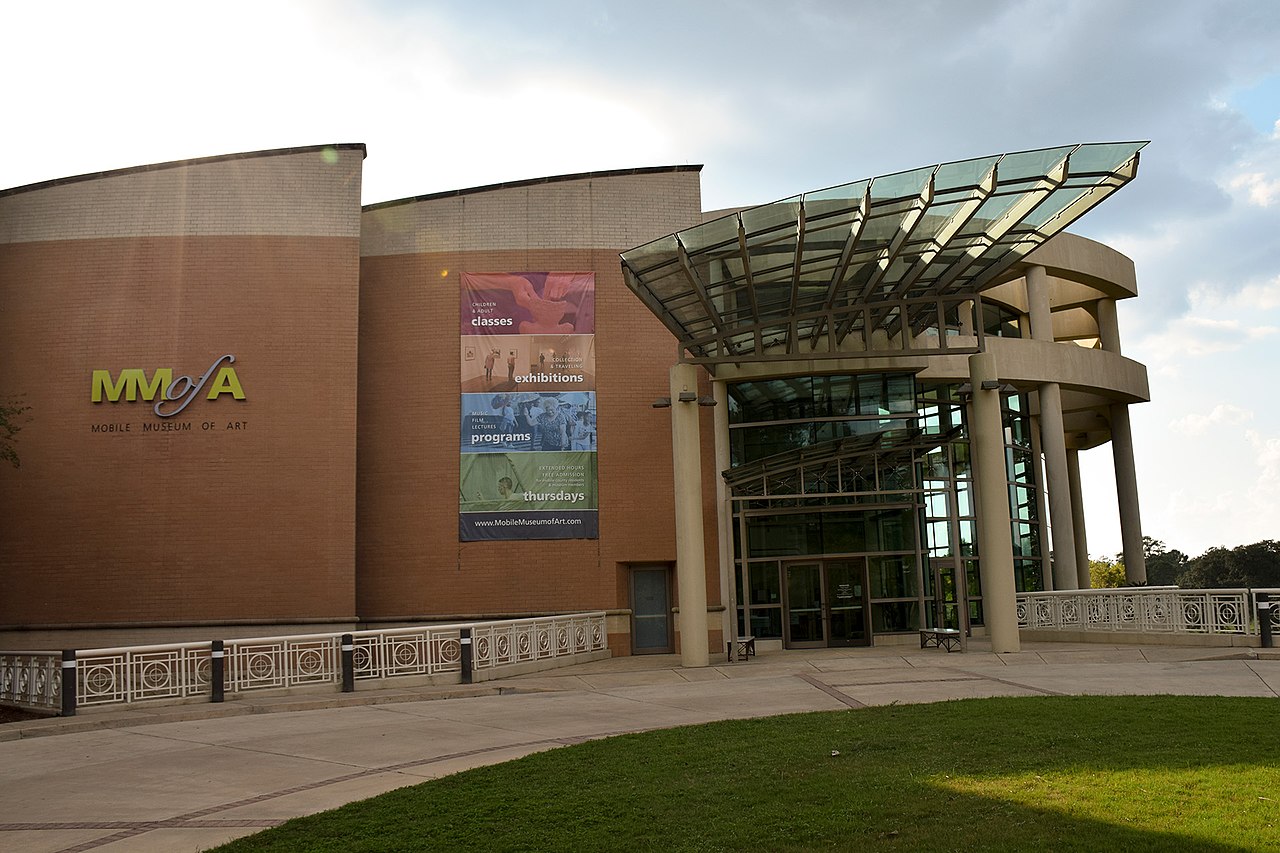
The History Museum of Mobile is located in the former City Hall–Southern Market building, considered the heart of the city, and reveals the rich, multi-layered history of Mobile and the surrounding region with more than 117,000 artifacts. With its story stretching from French colonization to the American Civil War and the heritage of African-descended communities, the museum offers a deep exploration of regional culture through interactive exhibits, rare objects, and historical photographs. Additionally, thanks to a project to create temporary and permanent exhibitions telling the story of the Africatown community arriving on the wreck of the ship Clotilda, the museum also addresses civil rights and African-American heritage in a contemporary context.
Visitors can conduct local history research at the Jack Friend Research Library, view the “Clotilda Exhibit” in cooperation with the Africatown Heritage House, and participate in learning workshops designed especially for children. The museum has won the “Best Museum” award from the people of Mobile Bay seven times and has been recognized by Main Street Mobile and Visit Mobile for its innovative programs. Open Monday to Saturday from 9:00 a.m. to 5:00 p.m. and Sundays from 1:00 p.m. to 5:00 p.m., the museum is an educational and impressive stop for both individual visitors and family or school groups.
9. Cathedral Caverns State Park
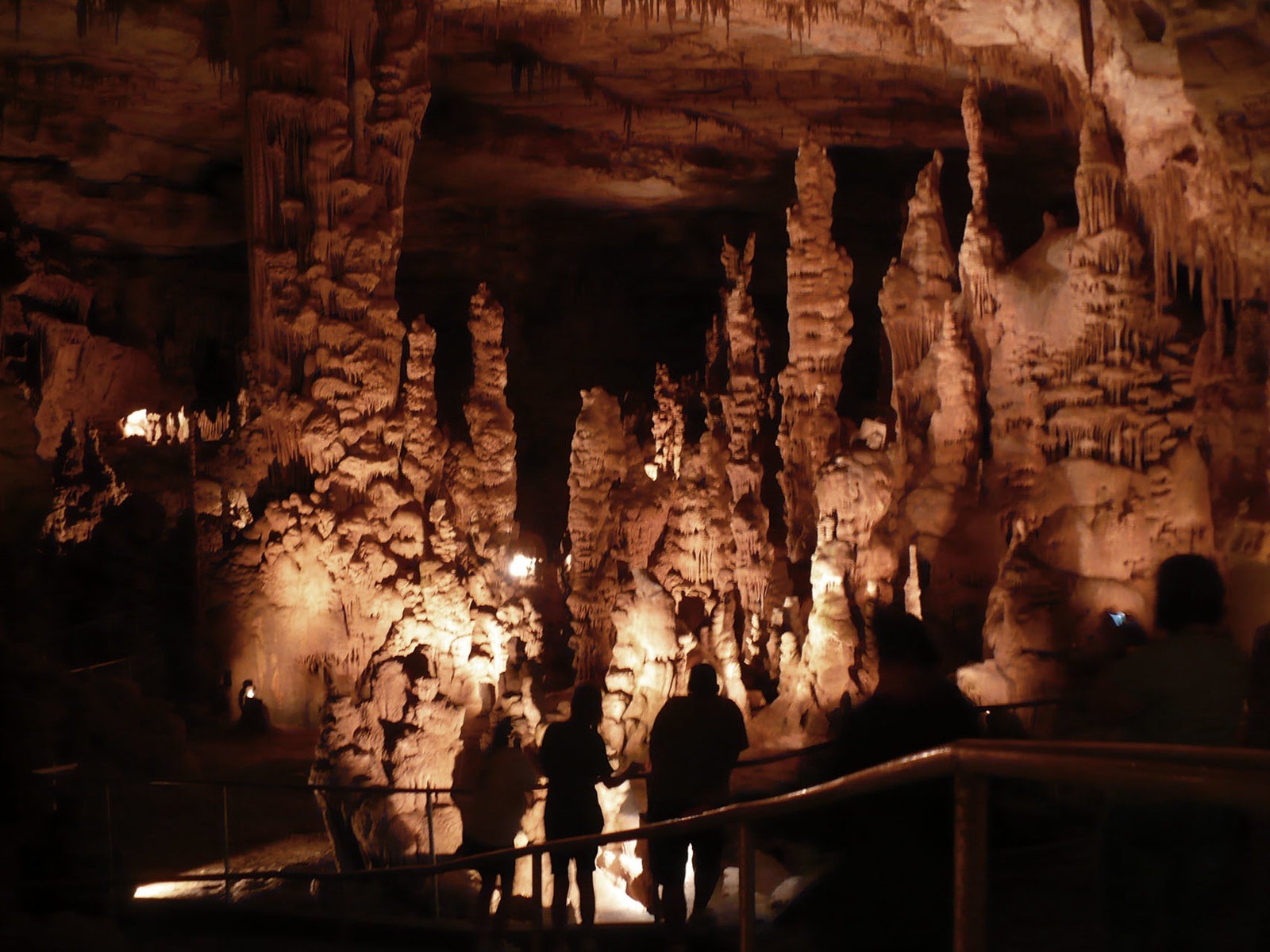
Cathedral Caverns State Park is an immense cave system located in northeastern Alabama between the towns of Grant and Woodville. It hosts one of the widest commercially developed cave entrances — 126 ft (approximately 38 m) wide and 25 ft (7.6 m) high. Inside the cave, the giant stalagmite known as “Goliath” reaches 45 ft (14 m) in height and 243 ft (74 m) in circumference, making it one of the largest in the world. The interior’s “cathedral hall” appearance is completed by its impressive arched ceilings, from which the cave takes its name, and its “frozen waterfall” formations.
The park is not limited to cave tours. Visitors can discover this unique underground world by following a guided tour lasting 1–1.5 hours along a concrete and railed trail approximately 3,500 ft (1,100 m) long. In addition, the 493-acre park offers hiking trails, picnic areas, camping opportunities, and “gem mining” activities for children. With the cave’s interior temperature remaining constant at 60°F (~15 °C), it provides an ideal atmosphere for a cool break in summer as well as for school and group visits.
10. Dauphin Island and Fort Gaines
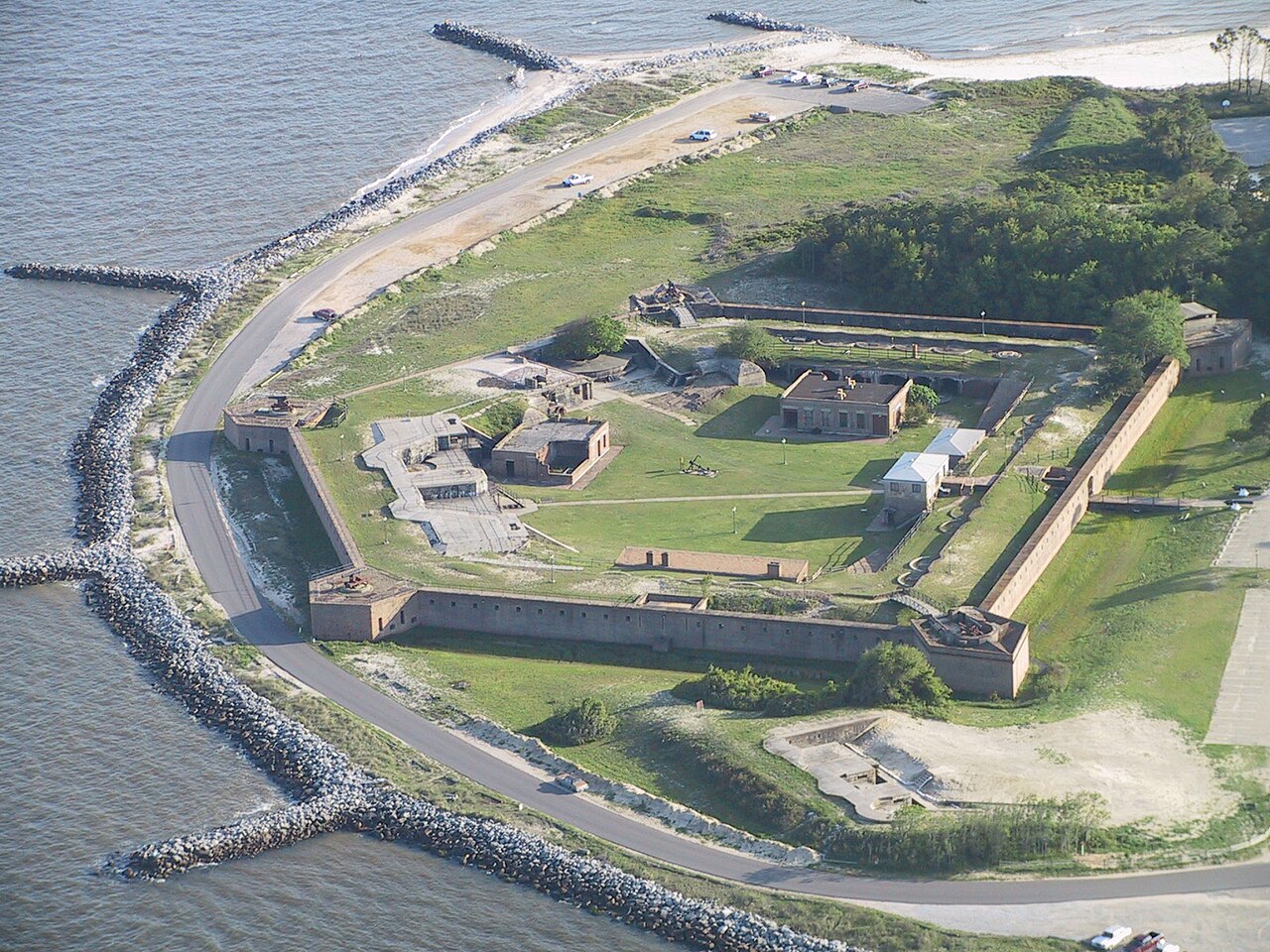
Dauphin Island and Fort Gaines are a historically and naturally rich destination located on Alabama’s southwestern coast at the very entrance of Mobile Bay. Over the years, Dauphin Island has been under French, British, and Spanish rule, and today welcomes visitors with its white sandy beaches, bird sanctuaries, and a peaceful atmosphere that supports marine life. On the island’s northern shore, Indian Mound Park provides important clues to the past with shell mounds dating from 1100–1500 BCE, while the Audubon Bird Sanctuary hosts more than 300 bird species each year, serving as the first stop on their migration journey.
Situated on the eastern tip of the island, Fort Gaines is an angular brick defense fort built between 1821 and 1853, gaining strategic importance during the Battle of Mobile Bay in 1864. Today, the museum keeps history alive with its original cannons, blacksmith workshop, kitchens, and tunnel systems. Visitors can watch cannon-firing demonstrations with guides in period costumes and feel the Civil War atmosphere up close. In addition, sunbathing on the island’s peaceful beaches, fishing, and watching the sunset among flocks of seagulls create unforgettable memories.
Dauphin Island and Fort Gaines offer a rich route focused on both learning and relaxation for travelers who want to combine historical exploration with enjoying nature.
11. Civil Rights Memorial (Montgomery)
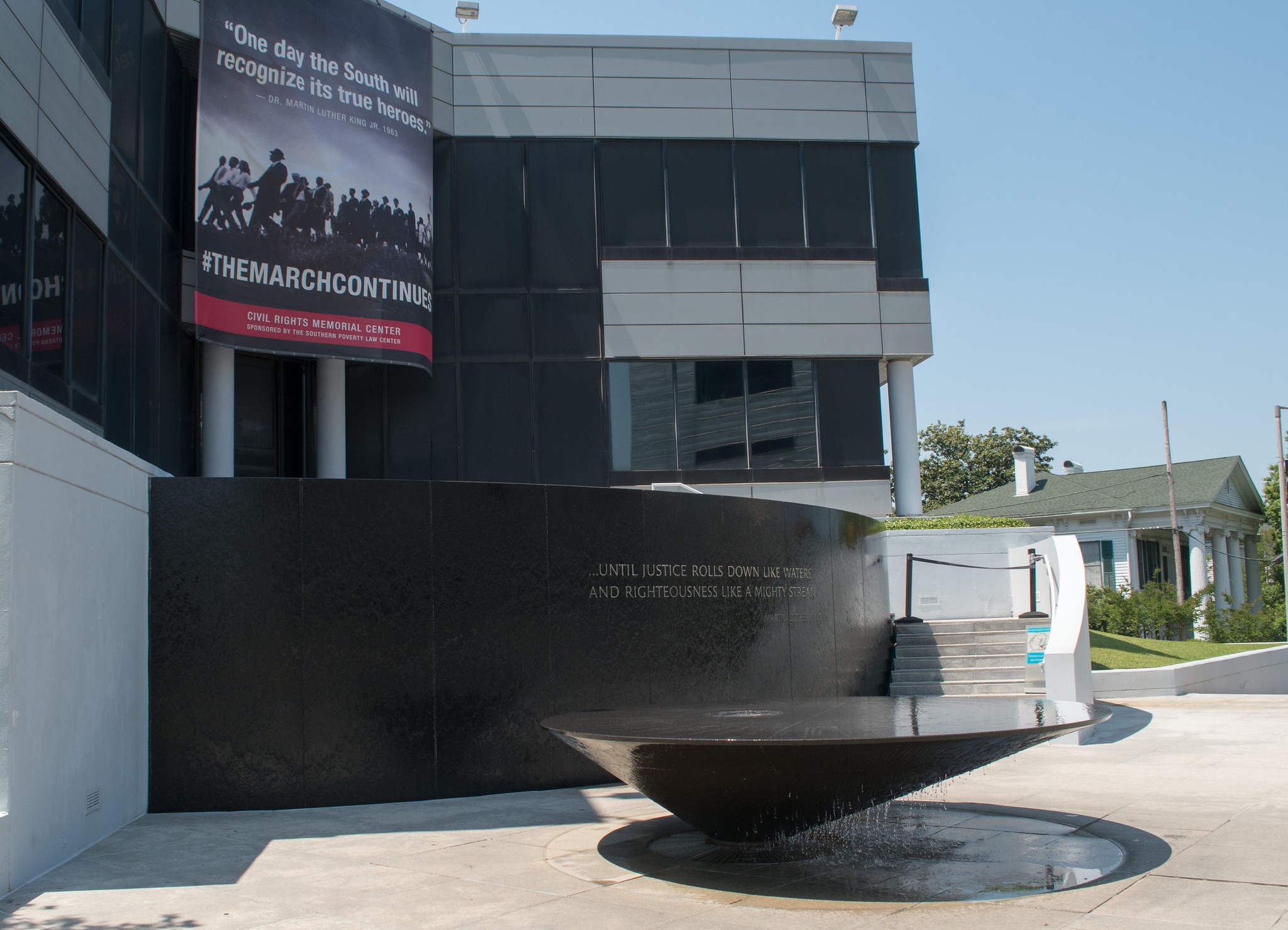
The Civil Rights Memorial (Montgomery), designed by Maya Lin in 1989, immortalizes the names of 41 people who lost their lives in the civil rights struggle between 1954 and 1968, engraved on a flowing water surface. The water flowing over black granite gives physical form to Dr. Martin Luther King Jr.’s words “…justice rolls down like waters and righteousness like a mighty stream,” allowing visitors to experience this flow by touching it. Visitors can access this memorial at any hour of the day, every day of the week; it is located right next to the Civil Rights Memorial Center.
Adjacent to the monument, the Civil Rights Memorial Center is operated by the Southern Poverty Law Center and offers guided tours lasting about an hour. The center brings to life the historical process of peaceful resistance with numerous interactive exhibits, the Wall of Tolerance, video presentations, and dramatic narration. The entrance fee is about $2 for adults and free for children. In addition, the memorial provides a quiet space around it to reflect on life and the victims, creating both an emotional and intellectual impact on visitors.
12. Birmingham Botanical Gardens
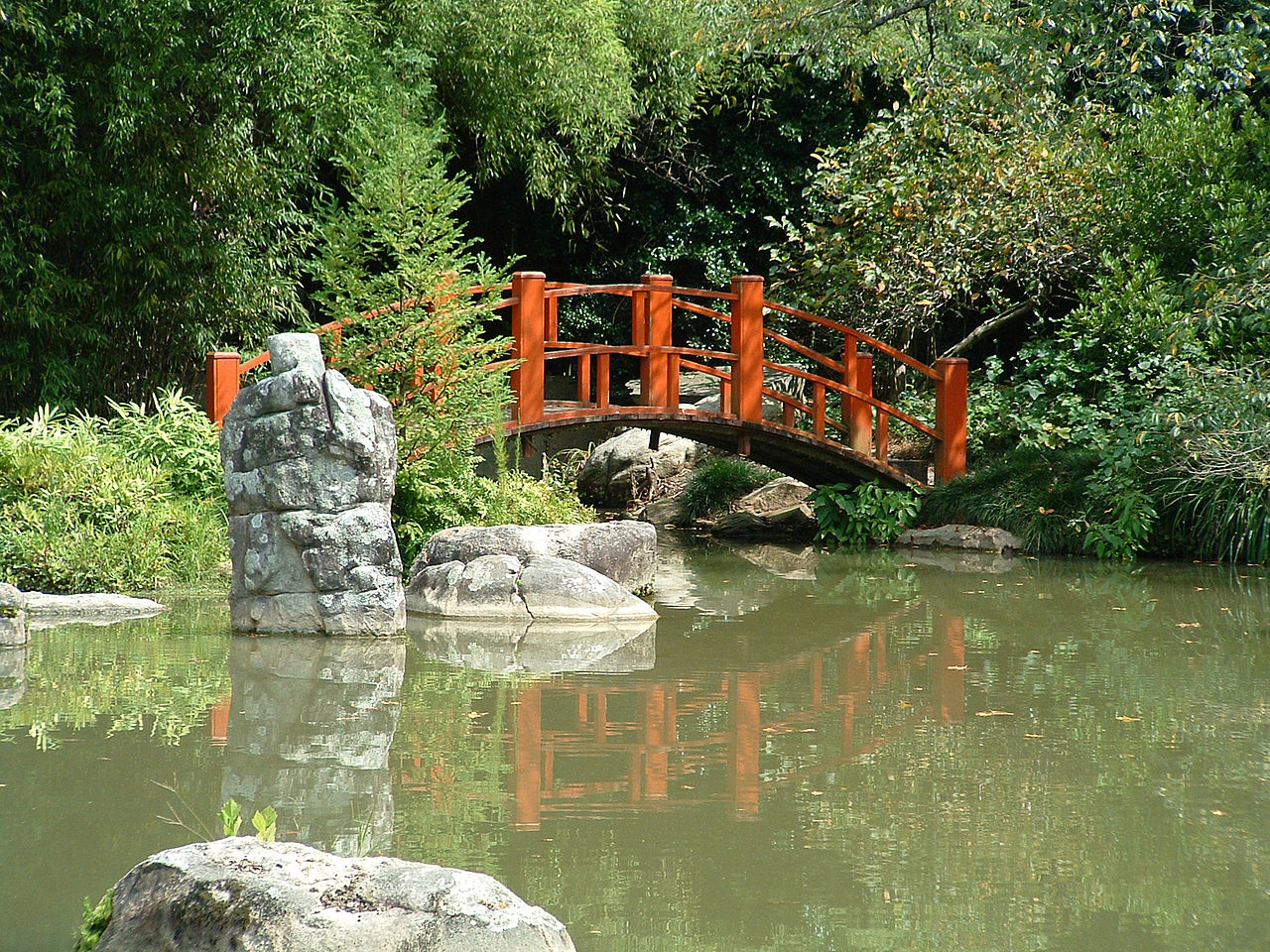
The Birmingham Botanical Gardens are located on a large 67.5-acre (27.3 ha) area near the city center and stand out with more than 24 themed garden sections. Its free admission and year-round accessibility make it attractive for both nature enthusiasts and families. The Japanese Garden, areas rich in roses and orchids, the glass conservatory, and the trails around the pond offer visitors a peaceful and aesthetic experience.
In addition, the extensive botanical library on site (with more than 14,000 books) and the gift shop provide opportunities for both gaining knowledge and purchasing souvenirs. With seasonal events (such as plant sales, educational programs, and conferences) and children’s workshops, it has become a lively center offering nature education to both adults and young participants. Especially the rose garden, with its colorful and fragrant atmosphere during seasonal transitions, is one of the visitors’ favorites.
13. Gulf State Park
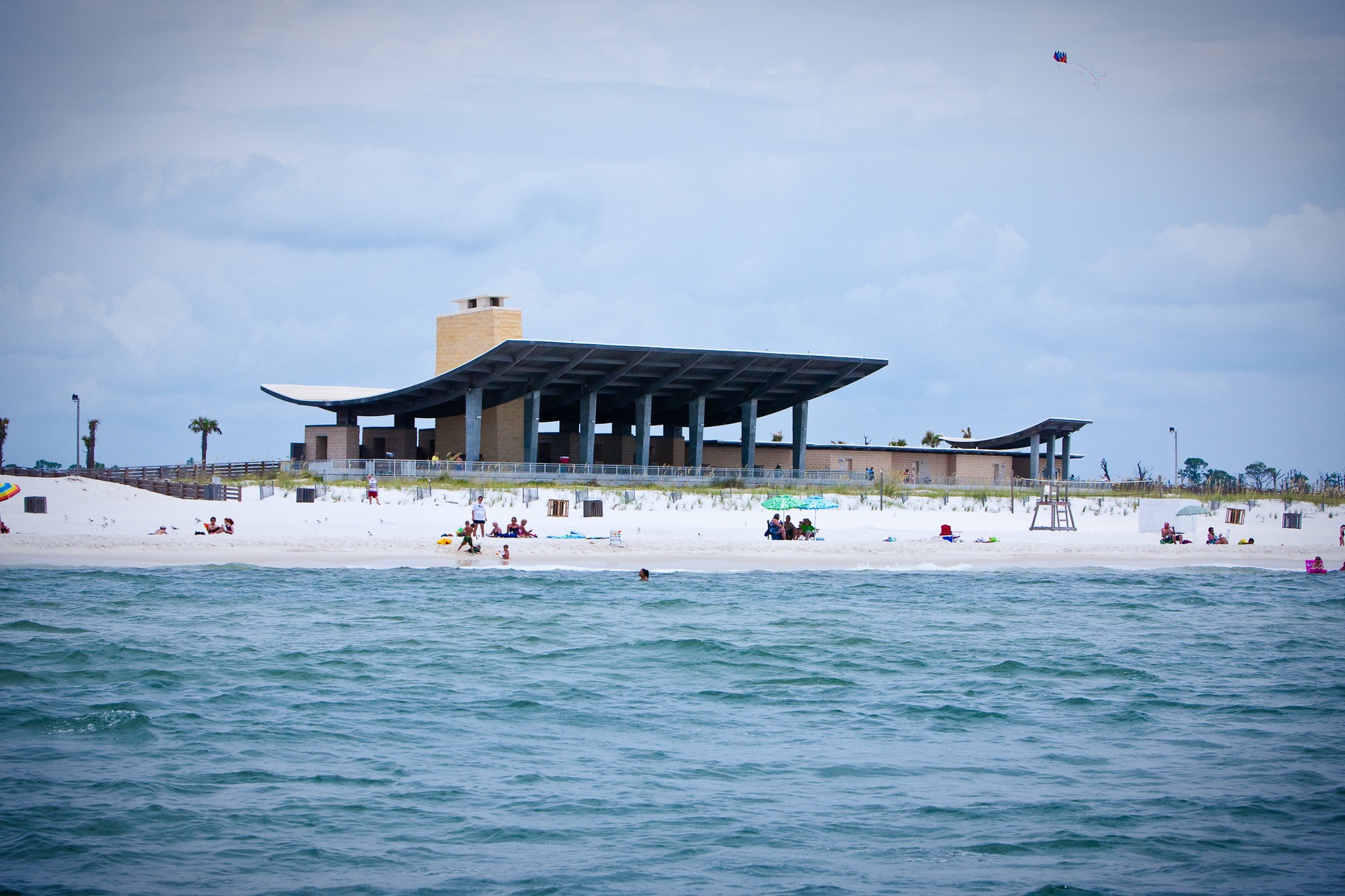
Gulf State Park is a massive nature preserve covering 6,150 acres (approximately 2,490 ha) on the Gulf of Mexico coast in the Gulf Shores area of Alabama. Opened in 1939, the park hosts nine different ecosystems, including 2.5 miles (4 km) of pristine white sandy shoreline, salt marshes, pine forests, and three freshwater lakes (Lake Shelby, Middle, and Little Lake) in the interior.
The things to do in the park are nearly limitless: you can explore up to 28 miles of trails by free bike rental, enjoy the view or fish from the massive fishing pier, go canoeing or swimming in Lake Shelby, engage in ecological education at the nature center, take peaceful walks in the butterfly garden, and organize family activities in the picnic areas. In addition, with modern campgrounds, bungalows, lakeside cabins, and the beachfront hotel “The Lodge,” you can have a rich experience whether for a day trip or an overnight stay.
Gulf State Park pleases not only nature lovers but also families and adventure seekers. With advanced nature centers, birdwatching points, and interactive environmental activities, it offers an educational experience, while the swimming pool, zipline, geocaching, nature hikes, and beach activities appeal to all ages. The park has won TripAdvisor’s “Traveler’s Choice” award and, achieving high satisfaction scores each year, has become one of the most popular attractions in the naturally beautiful Gulf Shores area.
14. Noccalula Falls Park (Gadsden)
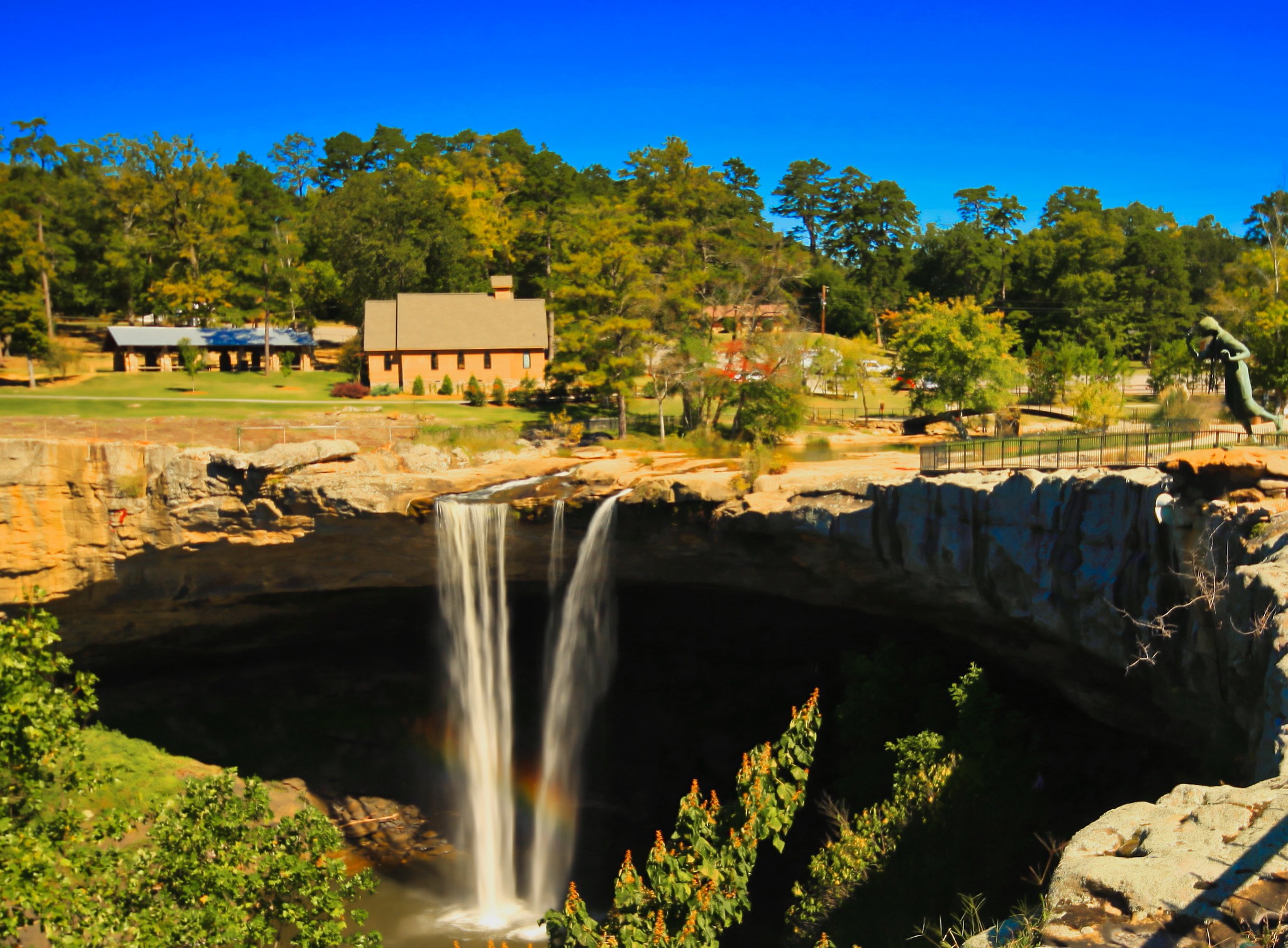
Noccalula Falls Park (Gadsden) is one of Alabama’s most impressive natural attractions. The star of the park is its 90-foot (27 m) waterfall; located on Black Creek, this magnificent drop can be viewed from different perspectives thanks to bypass trails that allow visitors to see it both from above and from behind. At the top of the falls stands a bronze statue honoring the legendary Cherokee princess Noccalula, which adds to the park’s historical and cultural significance.
The park goes beyond an ordinary nature excursion; within its 250-acre area, it offers both natural and interactive features. There is a miniature train ride, a petting zoo where visitors can see small animals, sports fields, playgrounds, a botanical garden, and the Gilliland-Reese covered bridge dating from 1899. You can hike along the Gorge Trail, go rock climbing, and stay in the campground (with 120 sites, cabins, and shower-restroom facilities). Throughout the year, events such as “Christmas at the Falls” and “Art on the Rocks” also add new dimensions to the visitor experience.
15. Oak Mountain State Park (Pelham)
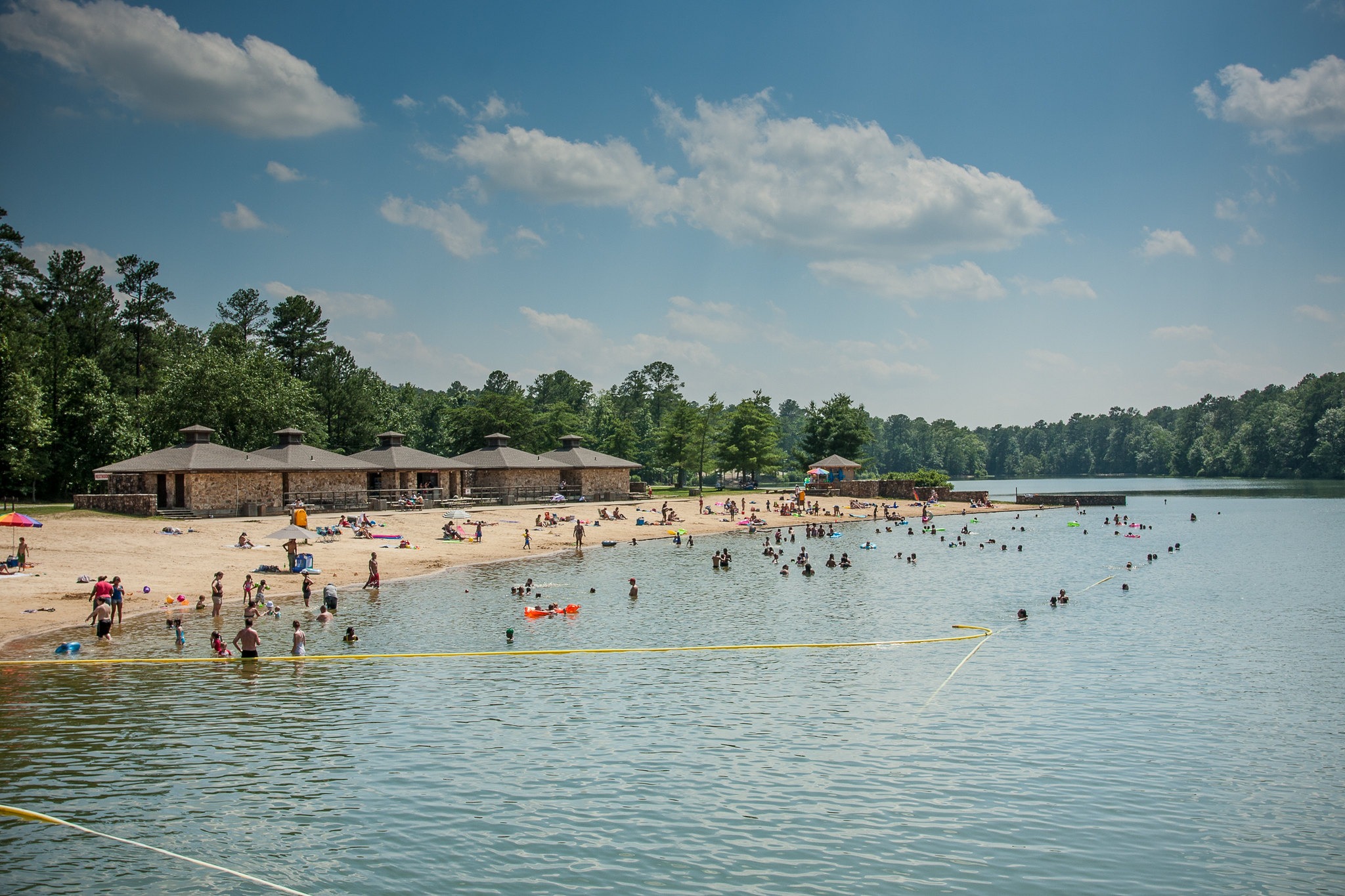
Oak Mountain State Park (Pelham) is Alabama’s largest state park; it began in 1927 with 940 acres (380 ha) but today covers approximately 9,940 acres (4,025 ha) and is located about 20 miles (32 km) from Birmingham. It stands out with its appealing nature and wide range of facilities: more than 100 miles (160 km) of hiking, biking, and horseback riding trails; three lakes; swimming beaches; a lakeside AquaPark; an 18-hole golf course called “The Oaks”; as well as activities such as a BMX track, boxing, and an archery range. Rehabilitated birds from the Alabama Wildlife Center can be observed from the boardwalk of the Treetop Nature Trail, offering a close look at the park’s natural ecosystem.
The park is also well-equipped for camping and lodging: in addition to tent, RV, or car camping, there are cabins and picnic pavilions as accommodation options. Providing an excellent setting for families and group trips, the park organizes educational programs for children, nature centers, and Alabama Wildlife Center exhibits. For those seeking active adventure, there are many activity options such as mountain biking (Red Trail, on the IMBA “Epic Ride” list), canoeing, fishing, horseback riding, wakeboarding, and zip-lining.
16. Fairhope Town (famous for its romantic and artistic atmosphere)
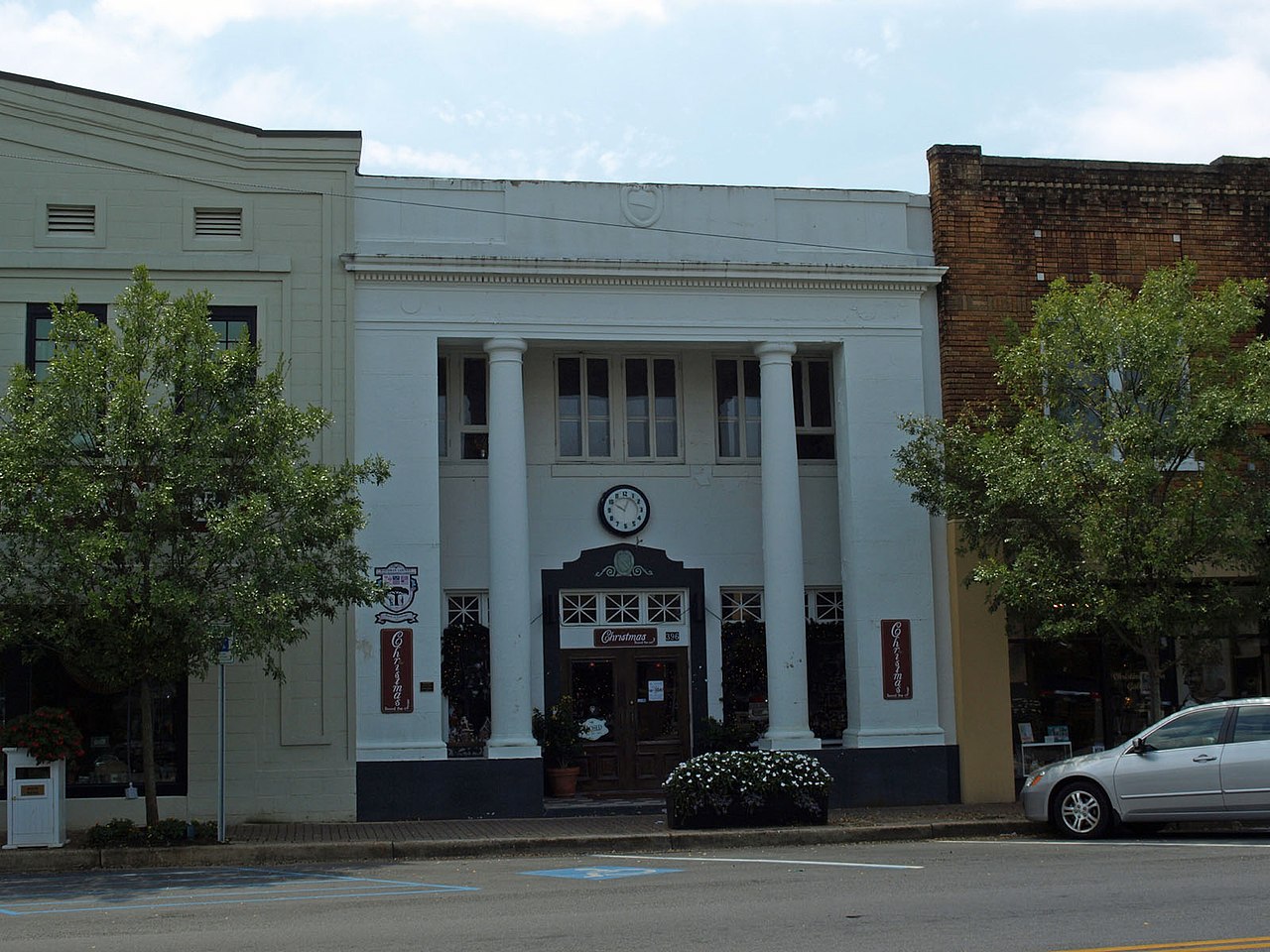
Fairhope Town is a charming coastal town located on the eastern shore of Mobile Bay, famous for its flower-adorned streets, boutique shops, art galleries, and romantic atmosphere. Founded in 1894, the town was born as a utopia shaped by Henry George’s “single tax” ideals and over time became a source of inspiration for artists, writers, and intellectuals. Among the places to visit in Fairhope are the Fairhope Museum of History with its historical heritage; the Eastern Shore Art Center, which has hosted contemporary exhibitions since 1952; Gallery by the Bay, where you can see works by local artists; and various artistic events organized throughout the year.
The town’s romantic side especially emerges with sunsets along the coastline and cafes in the small back streets. Watching the sunset at Fairhope Municipal Pier and taking a walk hand in hand in the park with its rose garden offer true peace. At the same time, the narrow cobbled streets known as “The Alley,” with their cozy cafes and illuminated stone walls, give a European vibe. Recommended activities for couples in the town also include food tours, couple’s cooking packages, and sunset kayaking experiences.
📅 Art and culture enthusiasts will love the festivals, gallery tours, and museum visits here. For couples seeking a romantic getaway, a simple evening by the shore or a night spent in elegant restaurants are among the most captivating moments of Fairhope.
17. Fort Morgan Historic Site
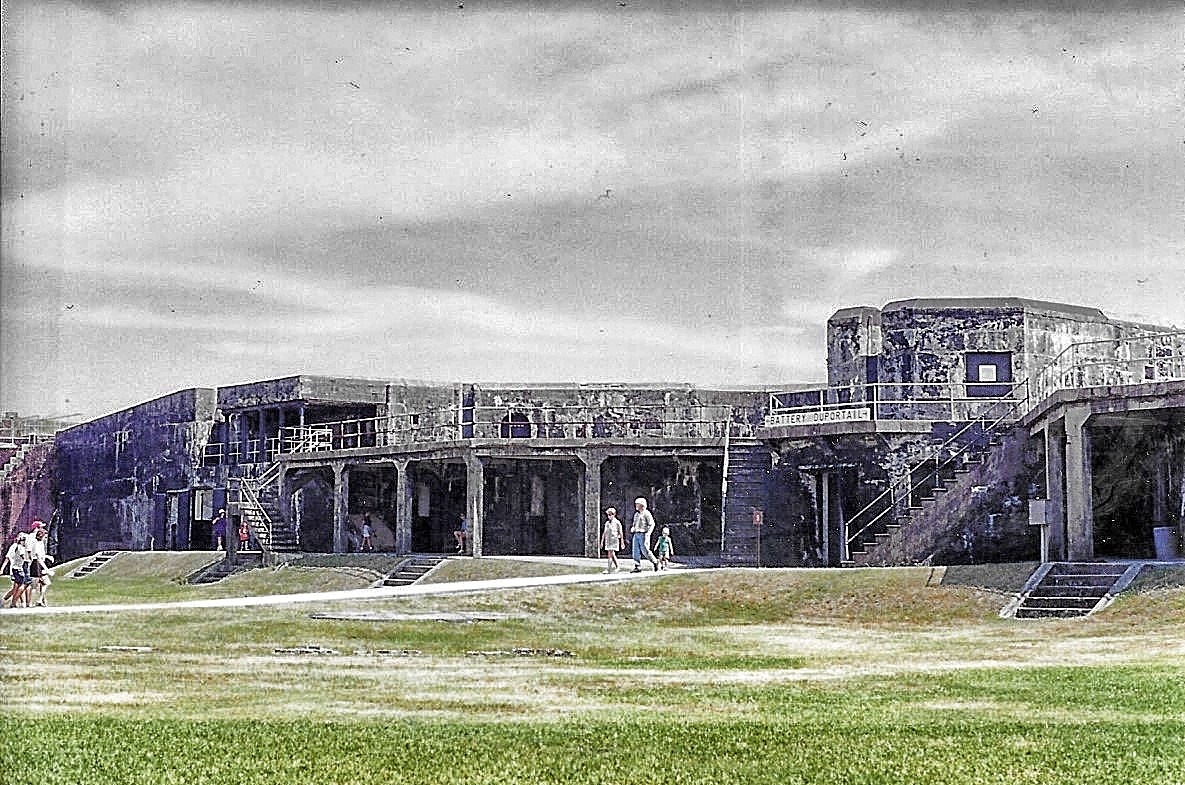
Fort Morgan Historic Site is located at Mobile Point at the entrance to Mobile Bay and is a five-sided walled fort built between 1819 and 1834. Constructed with more than 46 million bricks, this structure is among the “Third System” forts of the U.S. Army and is listed on the National Register of Historic Places as a National Historic Landmark. During the Battle of Mobile Bay in 1864, remembered for the command “Damn the torpedoes, full speed ahead,” Fort Morgan drew the defensive line during the Union navy’s entry, withstanding a two-week siege and playing a critically strategic role until its surrender at the end of August.
Today, visitors can explore the gun batteries, magazines, garrison living quarters, concrete ammunition storage, and the restored sallyport entrance along the fort walls. Through walking and guided tours, it is possible to discover the Native American settlements, the conflicts reaching back to 1814 Fort Bowyer, and periods of use through the Spanish-American War and both World Wars. In addition, watching the view of Gulf Shores and Dauphin Island from the fort courtyard, walking to birdwatching spots for nature lovers, or enjoying the sunset on Fort Morgan Beach offers an unforgettable experience. Fort Morgan is a rich destination appealing both to those interested in military history and to those seeking coastal tranquility.
18. Moundville Archaeological Park
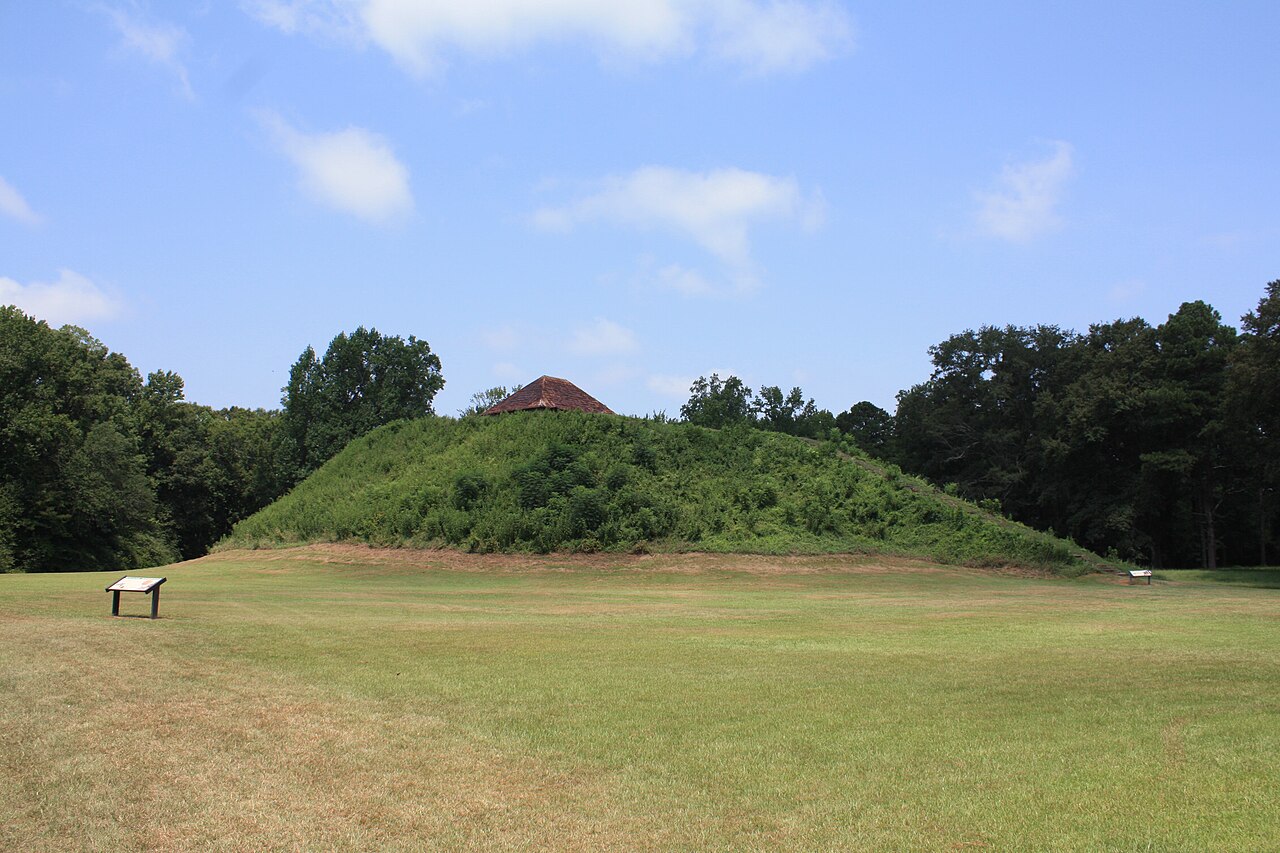
Moundville Archaeological Park is located near Tuscaloosa, Alabama, on the banks of the Black Warrior River, and preserves the remains of a large settlement that was the center of Mississippian civilization between 1000 and 1450. Covering an area of 326 acres (approximately 185–320 acres), the park includes a large central plaza surrounded by 29 flat-topped earthen mounds carefully arranged in a planned layout. The mounds served as ceremonial sites, residences for nobles, and public buildings; Moundville is considered the second-largest center of Middle Mississippian culture after Cahokia.
The Jones Archaeological Museum in the park displays numerous valuable artifacts excavated from the area since 1939; works of art such as the “Rattlesnake Disk” are particularly noteworthy. There is also a 0.8-mile (approximately 1.3 km) nature trail, picnic areas, campsites, and river views. Throughout the year, cultural events — such as Native American storytelling, handicrafts workshops, and traditional agriculture demonstrations — offer visitors a rich experience of both history and nature.
In summary, Moundville Archaeological Park is a unique destination for travelers who want to explore history, spend time in nature, and gain deep insight into Mississippian culture. While walking among the quiet mounds, you can feel the rich ceremonial life, social hierarchy, and aesthetic power of this ancient society. If you plan your visit along with the museum’s interactive exhibits, archaeological laboratories, and nature trails, an impressive and educational travel experience will be waiting for you.
19. Horseshoe Bend National Military Park
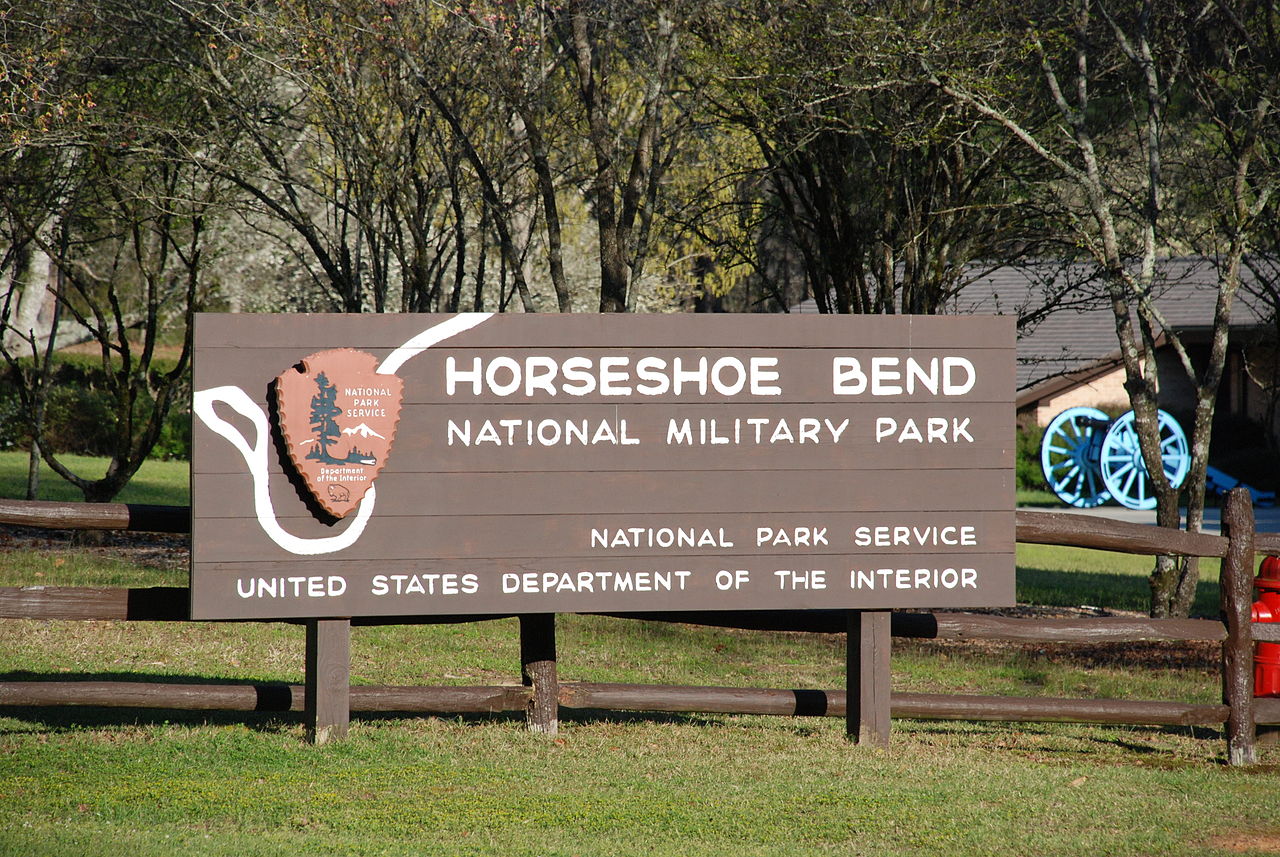
Horseshoe Bend National Military Park is a historic site located on a bend of the Tallapoosa River in Alabama and was the critical battlefield of the Creek War on March 27, 1814. Here, approximately 3,300 soldiers led by General Andrew Jackson, along with Cherokee, Lower Creek allies, and the U.S. Army, achieved victory against about 1,000 Red Stick Creek warriors. In this battle, more than 800 Creek lost their lives, and the victory ended the Creek War, resulting in the Creek Nation ceding approximately 23 million acres of land.
Today, the park, covering 2,040 acres, holds both historical and natural significance. Visitors can engage with the historical period through film screenings, period cannon batteries, and reenactments at the museum and visitor center; additionally, they can enjoy a 2.8-mile (4.5 km) nature trail, canoeing and kayaking routes along the Tallapoosa River, and picnic areas, providing both cultural and recreational experiences. The park is open every day of the week, with free admission; the visitor center operates from 9:00 a.m. to 4:30 p.m.
Horseshoe Bend stands out as both a painful memory for the Native people and one of the strategic turning points in American history. Today, walking on these grounds, listening to birdsong in the campground areas, or reflecting by the riverside creates a deep connection between humanity, history, and nature. If you want to combine cultural heritage with outdoor hiking, Horseshoe Bend is an impressive and meaningful stop in this regard.
20. Lake Martin (nature walks and relaxation areas around the lake)
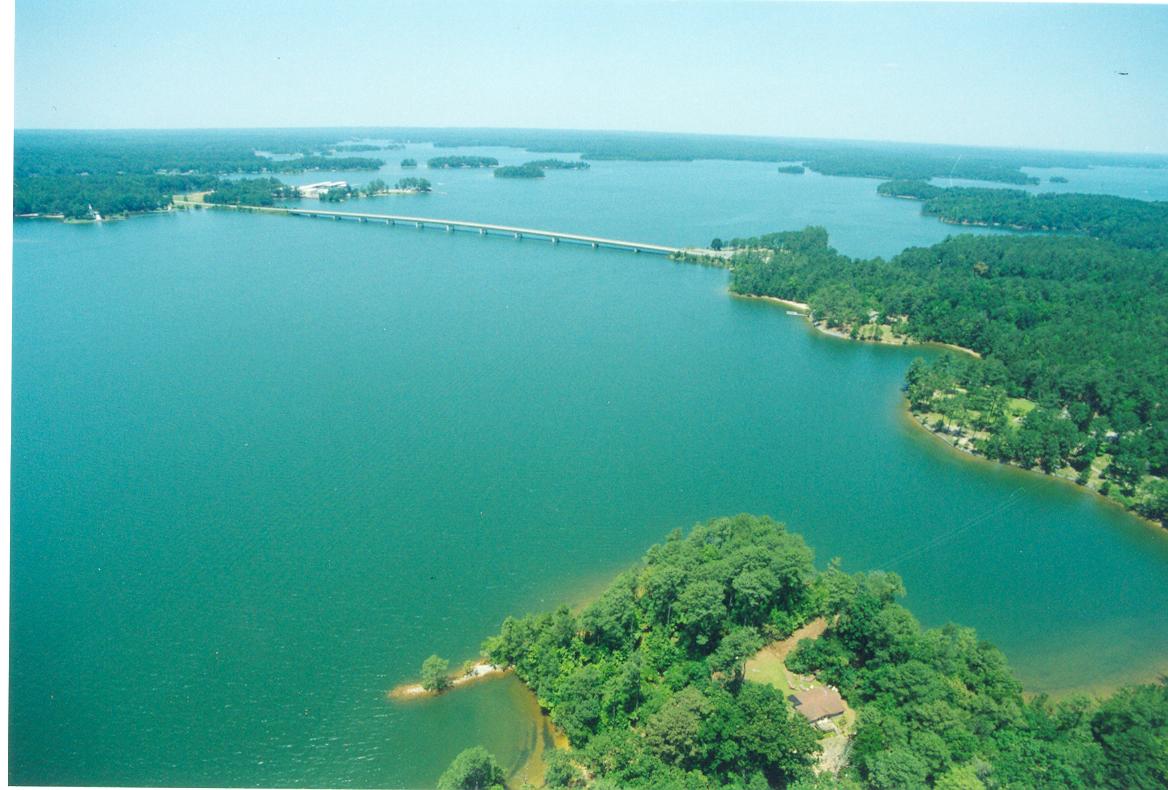
Lake Martin is a massive artificial lake on Alabama’s Tallapoosa River, covering approximately 44,000 acres (17,800 ha) with 750 miles (1,200 km) of forested shoreline. The lake stands out for its depth and clear waters, offering excellent opportunities for numerous water sports such as swimming, canoeing, fishing, sailing, and water skiing. In addition, the lake’s islands and natural formations — especially Acapulco Rock, known as Chimney Rock — are popular stops for both boating and scenic views.
The more than 100 miles of trail systems around the lake are a paradise for nature enthusiasts. Areas such as the Cherokee Ridge Alpine Trail, Smith Mountain Fire Tower, and Nature’s Way Preserve offer activities like hiking, mountain biking, horseback riding, and birdwatching. Additionally, lakeside parks like Wind Creek State Park provide opportunities for camping, picnicking, fishing, and swimming. The lake also offers experiences such as private guided boat tours, zipline canopy tours, and evening cruises on the lake.
